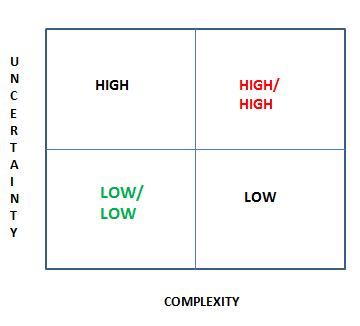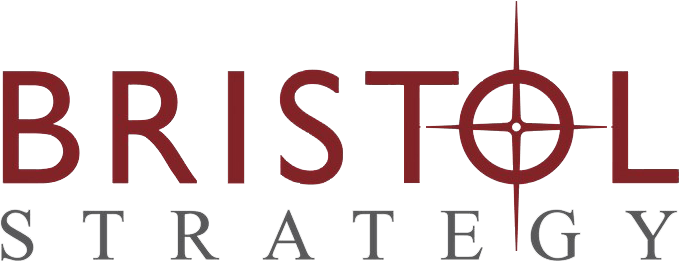 What’s the bigger challenge to fundraising: complexity or uncertainty? Both plague most development shops. Development officers encounter complexity every day. They juggle a zillion prospects, campaigns, events, sponsorships, and reporting tasks, so maybe it’s all that complexity that’s the bigger problem. On the other hand, uncertainty is also a constant threat, from the development officer’s concerns about whether or not Mrs. Richperson’s major gift is or isn’t ever going to come to fruition, all the way to the board’s lack of certainty about the accuracy or timeliness of reporting. And the potential face-ripping that might be encountered by the CEO if the forecast isn’t actually met. Ouch.
What’s the bigger challenge to fundraising: complexity or uncertainty? Both plague most development shops. Development officers encounter complexity every day. They juggle a zillion prospects, campaigns, events, sponsorships, and reporting tasks, so maybe it’s all that complexity that’s the bigger problem. On the other hand, uncertainty is also a constant threat, from the development officer’s concerns about whether or not Mrs. Richperson’s major gift is or isn’t ever going to come to fruition, all the way to the board’s lack of certainty about the accuracy or timeliness of reporting. And the potential face-ripping that might be encountered by the CEO if the forecast isn’t actually met. Ouch.
My colleague Marcy Rosenbaum, a triple-threat entrepreneur in her own right with experience in major corporations, nonprofits and her own entrepreneurial ventures, shared her Uncertainty/Complexity Matrix with me, and I find her insights so valuable I wanted to share them with you. At the end of the day, uncertainty and complexity pose equal challenges to the fundraising effort. While sometimes one “horse” is winning the race, sometimes the other one, each pose threats to your productivity. When complexity is high, there’s a great risk of confusion, poor prioritization, loss of focus, too much investment in the wrong prospects, not enough investment in the right prospects, missed deadlines, and general misery.

Then we’ve got uncertainty to deal with. How well I remember, from my days in corporate sales, how common it was for sales reps to keep their deals a secret and refrain from placing them on the forecast, until they were sure this deal or that was or wasn’t going to come in, under the mistaken belief they’d be better off hiding the ugly truth from the boss. I’m afraid that happens in development shops too, hopefully in a more diplomatic manner. Jose, one of my favorite development pros, did just that last week. Jose believed that one of his prospects offered a potential large gift, but to “be conservative” he forecast it at about 25 percent of its value. Does it really help Jose’s productivity to bury the true potential of the gift? I would argue that it doesn’t. At the very least, out of sight out of mind; Jose might not pay enough attention to a gift as small as that, or maybe he won’t get help from a board member or other major donor, someone who might be able to exert more influence to produce the larger gift.
So where on this matrix does your development shop fall? If it’s in the red zone – High/High – you’re losing money and might not even know it. Productivity could be leaking out of your efforts. Or maybe it’s hemorrhaging. Rather than worrying, ignoring, or denying the situation, you’d be better off tackling both challenges at once, so you can move your fundraising plans, programs and initiatives down into the green zone or Low/Low.
In some ways it’s easier to reduce complexity, since so much complexity can be automated away. If you have a donor-management platform, and everybody on your team uses it properly, then you are most likely reducing some complexity. Simply having all your records in one place, keeping track of who’s supposed to do what when, and for how much, will untangle some of the mess for you. Too bad data from the Leaky Bucket Assessment show that only about 62 percent of nonprofits use such software. Other forms of marketing technology can also reduce complexity, such as social media, e-newsletter services and the like; they’ll all tell you if your e-blast went out on time and how many people opened or responded to it. At least you’ll know, right?
Lowering uncertainty may be even more challenging, since so much of what produces uncertainty is invisible. Or at least unacknowledged. Some things that could reduce fundraising uncertainty include documented donor profiles, strategic plans with clear development goals and objectives, and useful performance targets. Too bad the Leaky Bucket study suggests that development shops with such productivity aids in place are scarce: only about half have a strategic plan. Documented donor profiles? Only 28 percent. And believe it or not, only 26 percent of all participants said that they had an up-to-date case statement, and that includes shops with senior professionals, organizations with large budgets, and nonprofits from virtually every sector imaginable.
Start 2014 out right, with an unflinching analysis of your shop’s level of complexity and uncertainty. It’s worth the effort. Take the Leaky Bucket Assessment to help you see where you encounter uncertainty and complexity in your fundraising shop today.

